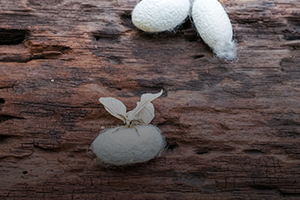Silk Bioinks

As we’ve reported in the past, 3D printing is being widely used to generate tissues and even organs for human implantation. Most of these methods utilize collagen as a scaffold for cells to grow, but a new technique has been developed that uses wild silk to build the supporting structure.
Before it can be used in humans, collagen (which is extracted from animal remains) must be purified – a process that is costly and complex. On the other hand, silk can be easily removed as a liquid from silkworm glands, or fibers can be dissolved in solvents to be deposited layer by layer using a 3D printer. Wild silk also has natural properties that enable cells to adhere to the matrix without the need for chemical binders. And once the cells grow, the silk scaffold safely reduces to amino acids.
Prototype structures of bone, heart and liver tissue have already been developed. Next the researchers hope to create a human knee meniscus and reconstruct the intricate cartilage structure at the ends of a bone.
For information: Biman Mandal, Indian Institute of Technology Guwahati, Surjyamukhi Road, North, Amingaon, Guwahati, Assam, 781039, India; phone: +91-361-258-3000; email: biman.mandal@iitg.ernet.in; website: http://www.iitg.ac.in/ or http://www.iitg.ac.in/biman.mandal/index.html